Heading out the door? Read this article on the new Outside+ app available now on iOS devices for members! Download the app.
This flow is an important offering that reaffirms strength and makes space for vulnerability. Heart openers ignite power, while resting poses help ground it in wisdom—so you can embrace the entire texture of your being. Feel free to modify and use props.
Tadasana (Mountain Pose)
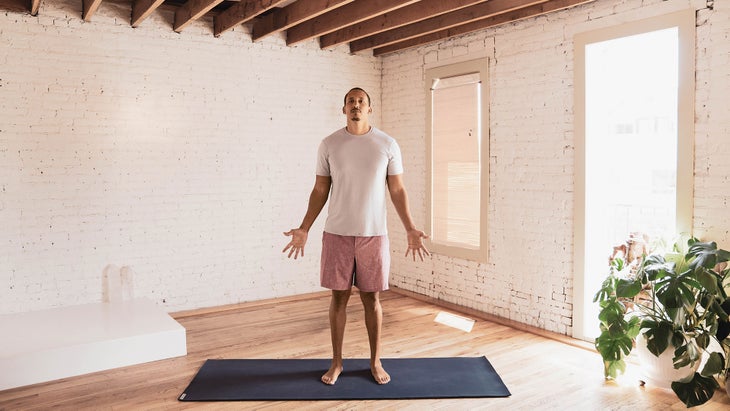
Stand in the strength of stillness with your feet together or hip-width apart. Inhale your shoulders up. Exhale them back and down with your palms facing forward and your arms relaxed. Gently press your shoulder blades into your back, and close your eyes or soften your gaze. Inhaling deeply through your nose and exhaling through your mouth, take 3–5 cleansing breaths.
Urdhva Hastasana (Upward Salute)
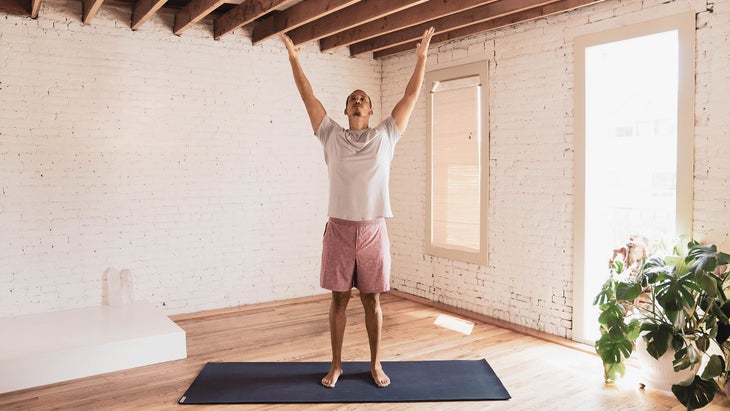
Inhale, and move your arms out and up toward the sky. Exhale, and release your arms down to your sides.
See more on Urdhva Hastasana
Standing Heart Opener
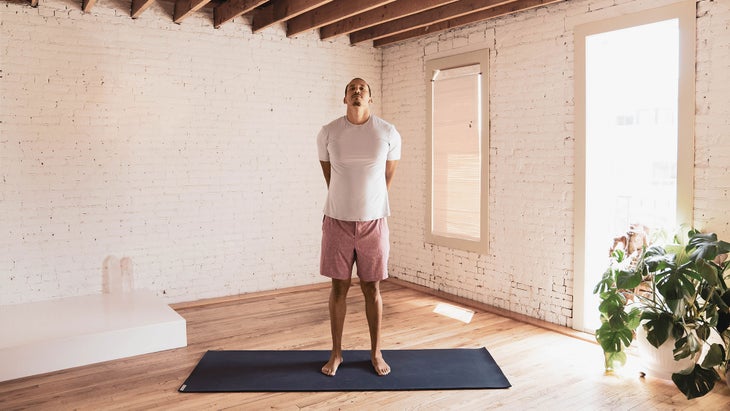
Interlace your fingers behind your back. Inhale, and lift your chest upward while pressing your knuckles toward the earth. Practicing Ujjayi Pranayama (Victorious Breath), stay for 3–5 breaths. First, lengthen your inhalations with your mouth open, constrict the back of your throat, and on the exhalations, create a long haa sound. Then, close your mouth as you breathe to make an ocean sound.
Upward Salute
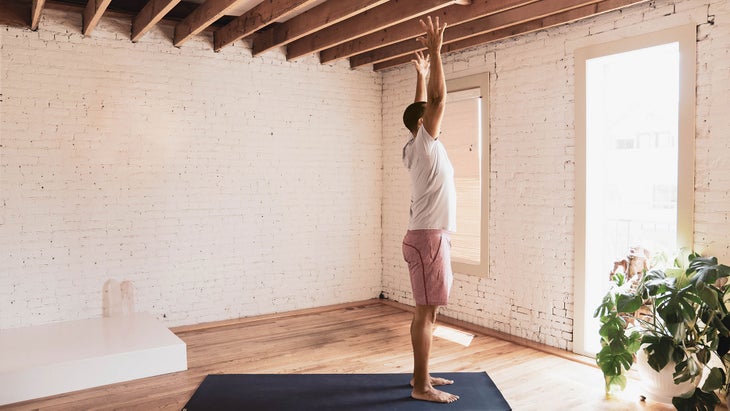
Release your fingers, and make a circular arm motion as you inhale your arms overhead, returning to Urdhva Hastasana.
Uttanasana
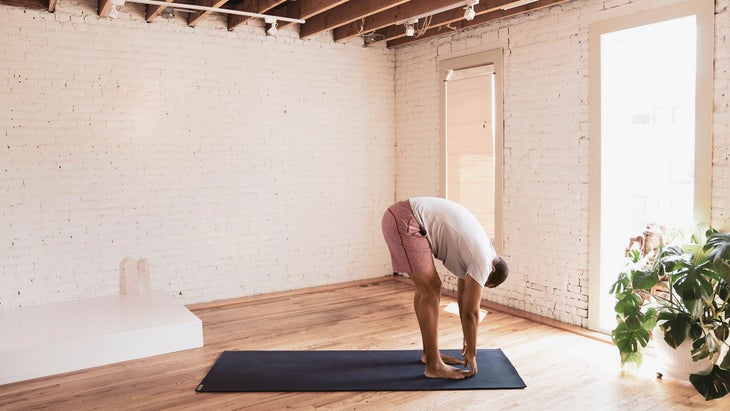
Exhale, and swan-dive forward, releasing your arms out to either side of you in a wide arc.
Watch a demonstration of Uttanasana
Ardha Uttanasana (Half Standing Forward Bend)
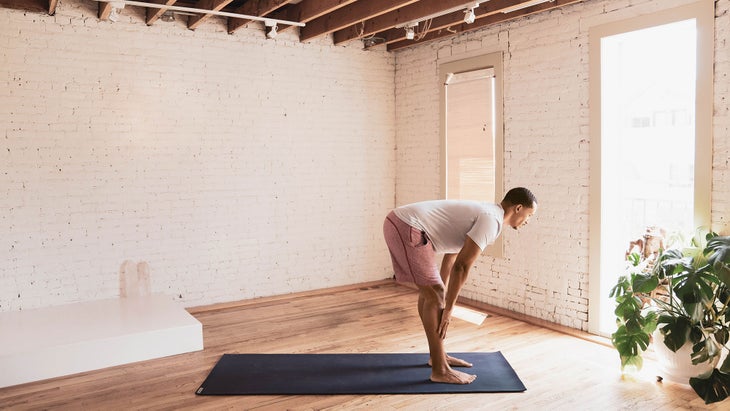
Place your hands on your shins, or grab two blocks, and place one underneath each hand at a height that feels comfortable for you. As you inhale, lengthen your spine, and press the center of your chest forward. If you experience tight hamstrings or lower-back pain, bend your knees.
Plank Pose
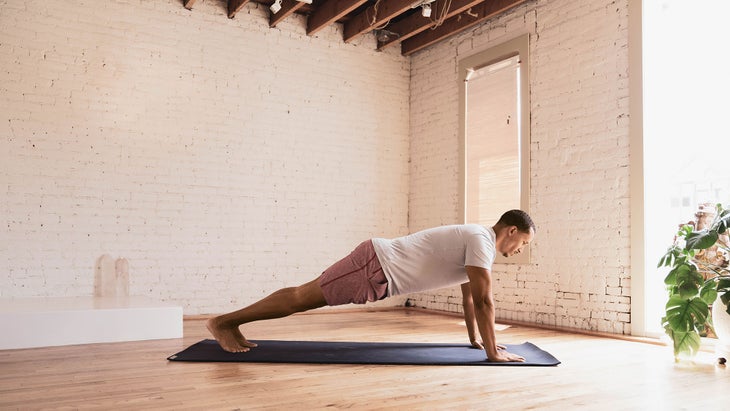
Place your hands flat on the floor, bend your knees, and step both feet back, coming into Plank with your toes curled under and your shoulders above your wrists. Ignite power into your palms by spreading your fingers wide and pressing your finger pads into the earth. Grow long through your spine by pressing your heels toward the back of your mat. Engage your core by exhaling from your navel to your spine. Stay for 3–5 breaths. Relax the muscles in your face and the space between your shoulder blades. Notice how softening can help you maintain strength in the pose.
Chaturanga Dandasana to Makasana (Four-Limbed Staff Pose to Crocodile Pose)
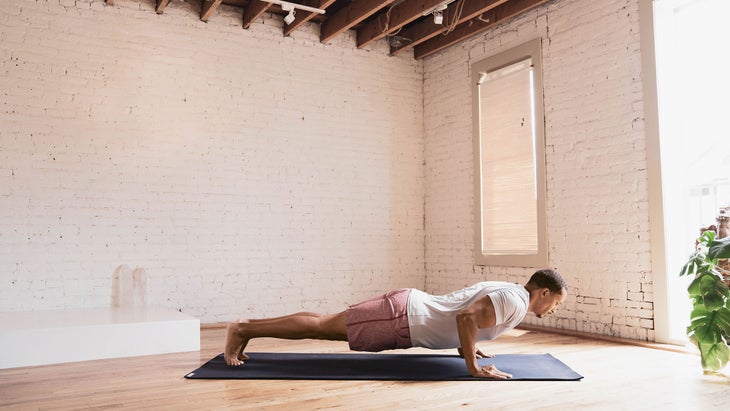
Exhale, and lower into Chaturanga. Take a breath, and then exhale your body down to the earth. (Modify by lowering your knees, then your chin and chest, to the ground.) Lying on your belly in a prone position, allow your body to release any tension into your mat. Then, place one forearm on top of the other, folded beneath your face, gently resting your forehead. Stay here for 6–10 breaths.
Sphinx Pose
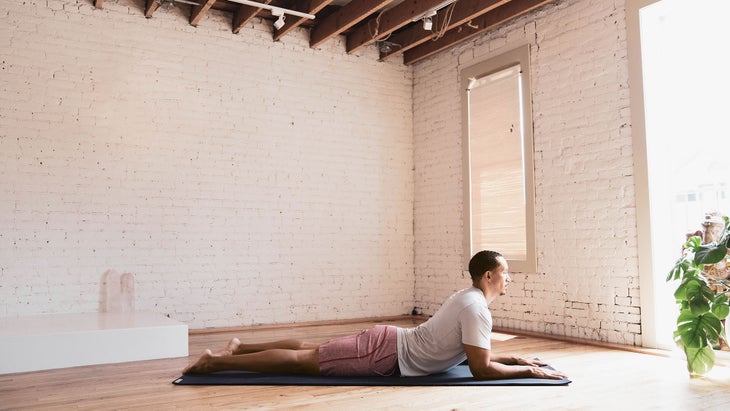
Arrange your palms, forearms, and elbows parallel on the ground in front of you with your elbows anchored beneath your shoulders. Firmly pressing your palms into the earth, lift your chest. Press the tops of your feet into the ground while inwardly rotating your thighs and lengthening your tailbone toward your heels. Actively press your shoulder blades into your back, and relax the muscles of your face and throat. Stay here for 3–5 breaths, focusing on the effort of your body and the ease of your breath.
Balasana (Child’s Pose)
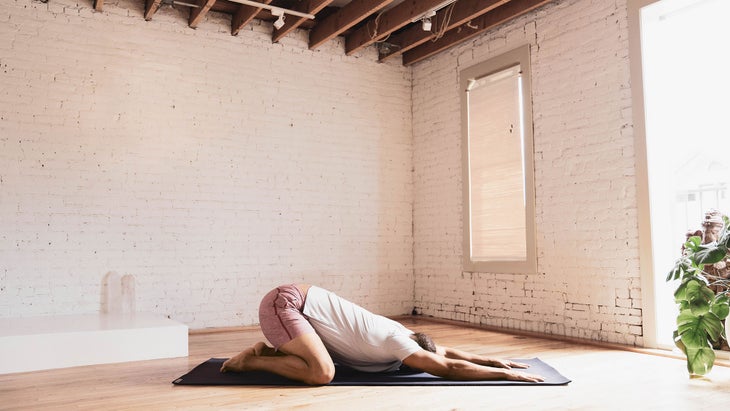
Move into Tabletop. Place your toes together, and open your knees to mat width. Exhale, and release your hips toward the back of your mat. Keep your arms stretched out in front of you. If your lower body feels restricted, place a bolster or a stack of pillows underneath your chest or hips. Stay until you feel ready to release.
Watch this video demonstration of Child’s Pose
Savasana (Corpse Pose)
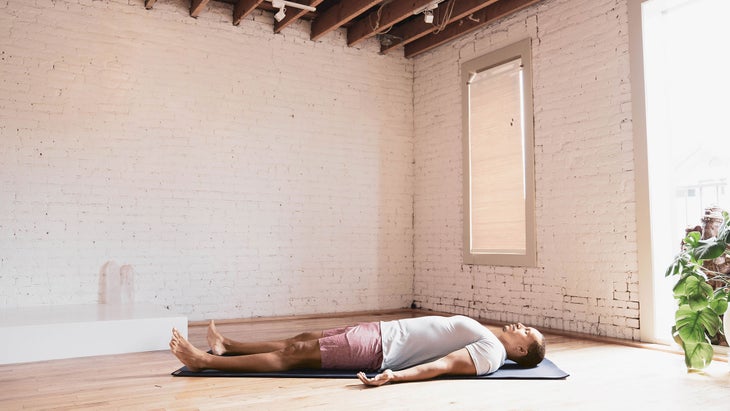
Lower your back flat on the earth. Honor your strength and softness by closing your eyes and resting in the power of your own stillness. Release your Ujjayi Pranayama and return to an effortless breath as you count backward from 10. Stay here as long as you need to. When you’re ready, inhale, extend your arms overhead, and point your toes forward for a full-body stretch. Exhale, and draw your knees into your chest for Apanasana (Knees-to-Chest Pose). Release your feet to the earth. Then, turn your body either to your right or left side, and come into a fetal position. Take your time; allow yourself to be held by the earth.
When you’re ready, press both palms into your mat and bring yourself into Sukhasana. With eyes shut, take 3–5 breaths to close your practice. Reflect on the relationship between strength and stillness and how bringing softness into your life can cultivate balance, help you tap into your inner self, and foster more connection with those around you.
See also This Yoga Program Empowers Teen Boys to Express Emotions & Activate Politically.
About the author
Shane Roberts is a yoga teacher and the co-founder of Red Clay Yoga. He studied yoga philosophy with Swami Jaya Devi Bhagavati at Kashi Atlanta. Learn more at redclayyoga.org.